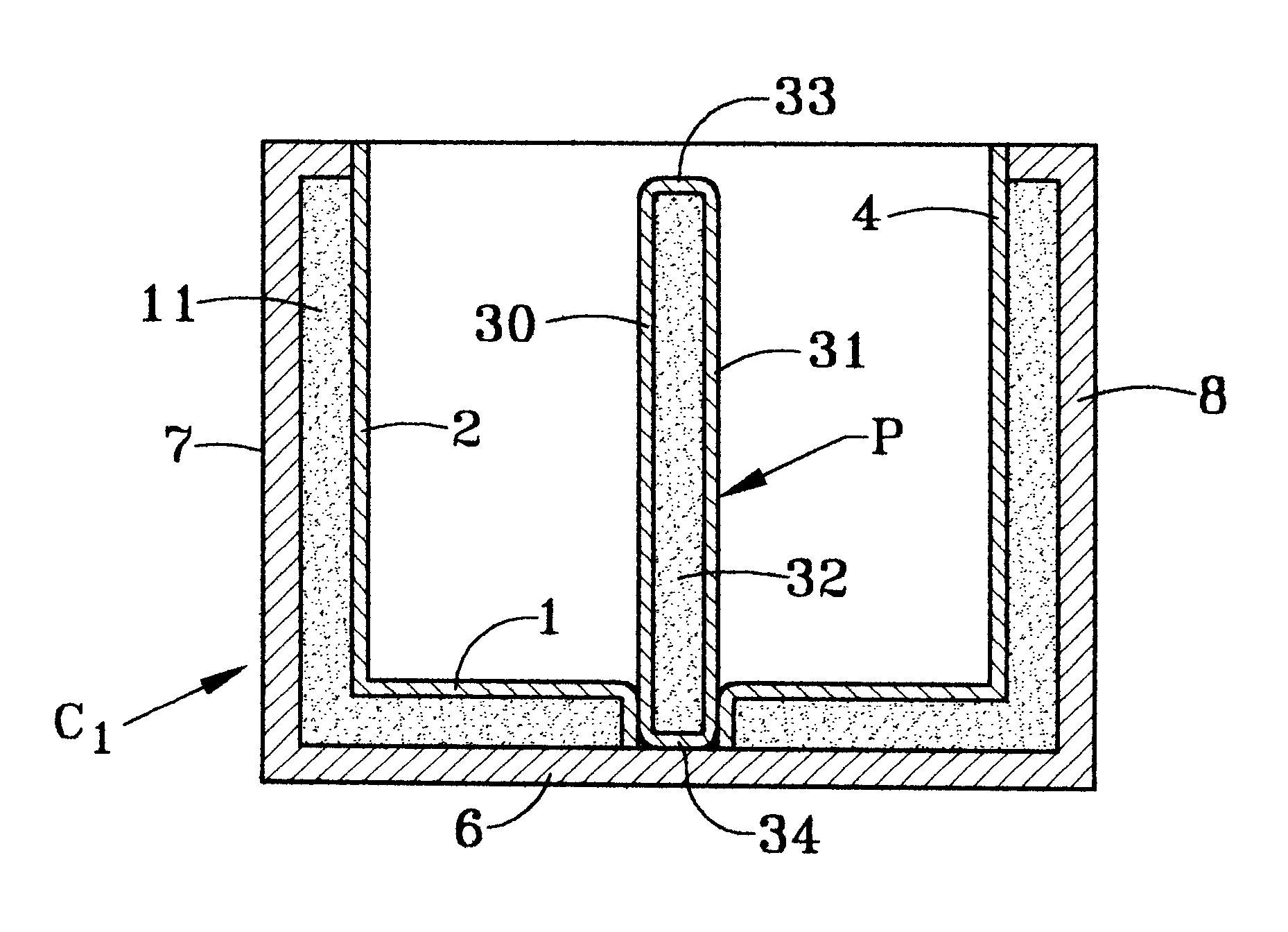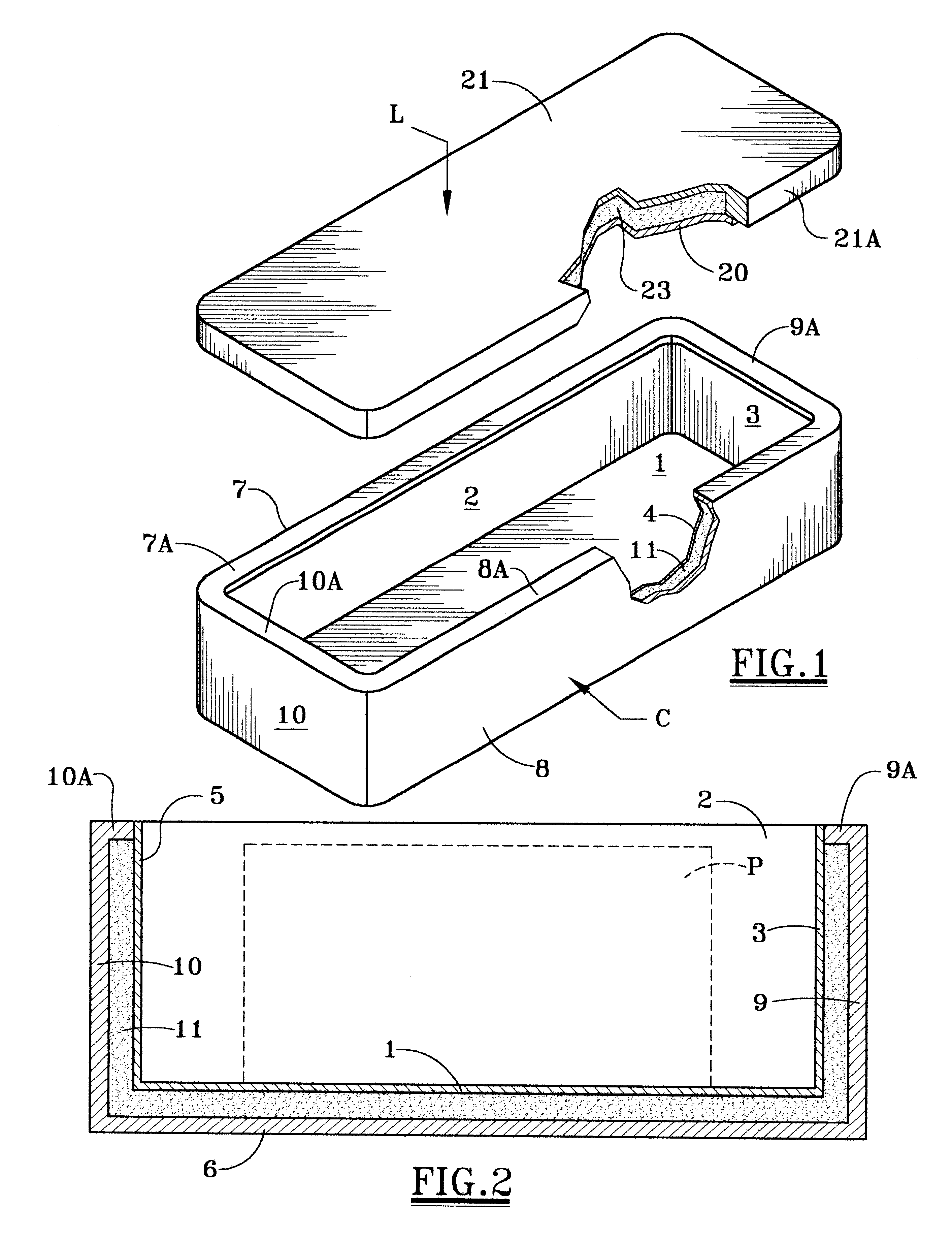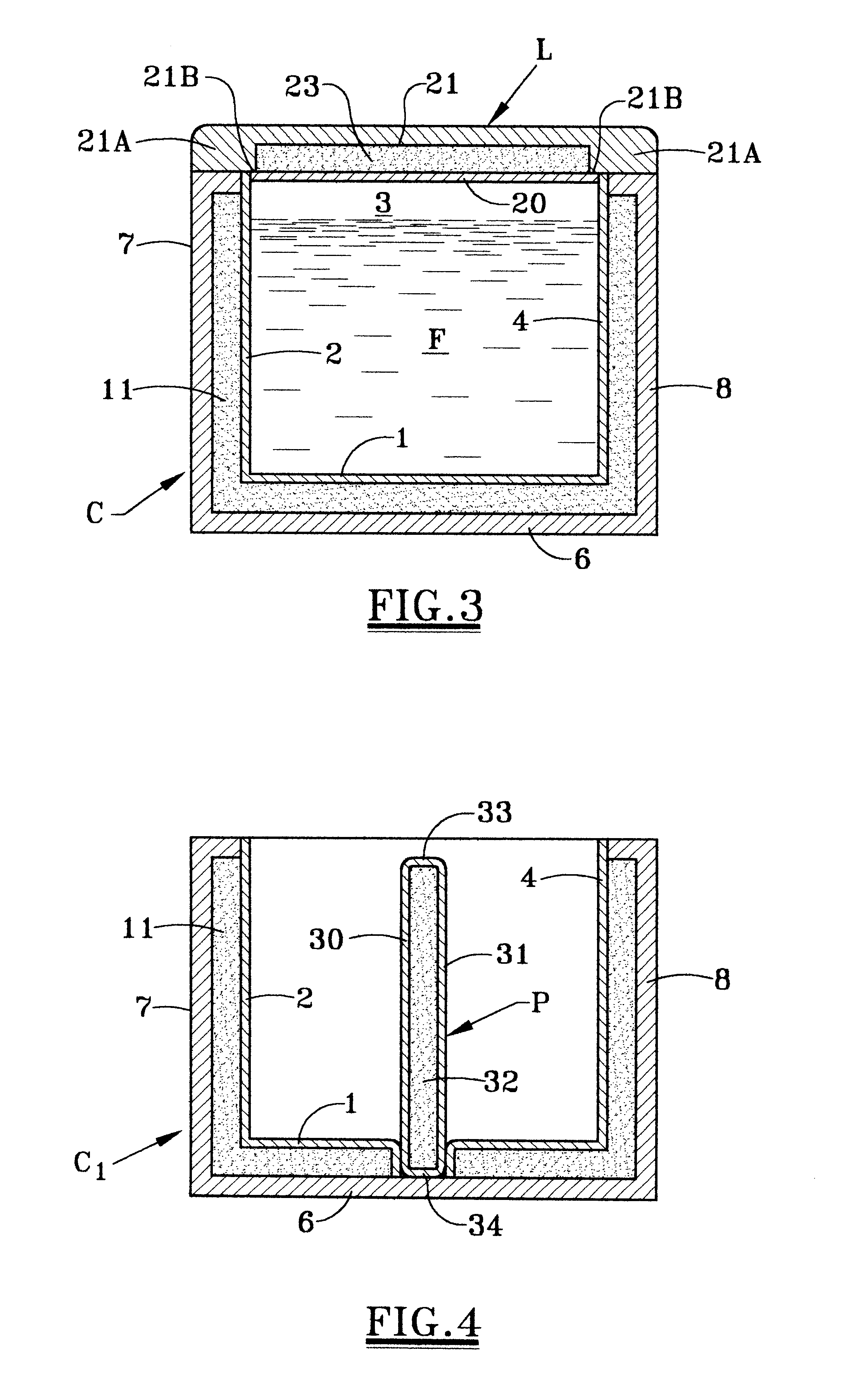Rapid cooling food container
a food container and rapid cooling technology, applied in the field of food containers, can solve the problems of borne illness, rapid growth of such microorganisms, and most hazardous microorganisms still present, and achieve the effect of reducing the temperature of foods placed and reducing the temperature of them
- Summary
- Abstract
- Description
- Claims
- Application Information
AI Technical Summary
Benefits of technology
Problems solved by technology
Method used
Image
Examples
Embodiment Construction
Referring first to FIGS. 1, 2 and 3, there is shown a container for rapidly cooling and holding foods at safe temperatures for extended periods of time. The container comprises a composite container C and a composite lid L. The composite container C comprises an upwardly opening inner container which provides an inner bottom 1 and upwardly extending inner side walls 2, 3, 4, and 5. The composite container C also includes an outer container which provides an outer bottom 6 and upwardly extending outer side walls 7, 8, 9, and 10.
The outer bottom 6 and outer side walls 7, 8, 9 and 10 of the outer container surrounds the inner container but are spaced therefrom to leave an enclosed chamber 11 therebetween. The upper extremity of the enclosed chamber 11 may be closed in any manner. In the exemplary embodiment, the upwardly extending side walls 7, 8, 9, and 10 of the outer container are provided with inwardly projecting lips or flange portions 7a, 8a, 9a, 10a, which engage the inner side ...
PUM
 Login to View More
Login to View More Abstract
Description
Claims
Application Information
 Login to View More
Login to View More - R&D
- Intellectual Property
- Life Sciences
- Materials
- Tech Scout
- Unparalleled Data Quality
- Higher Quality Content
- 60% Fewer Hallucinations
Browse by: Latest US Patents, China's latest patents, Technical Efficacy Thesaurus, Application Domain, Technology Topic, Popular Technical Reports.
© 2025 PatSnap. All rights reserved.Legal|Privacy policy|Modern Slavery Act Transparency Statement|Sitemap|About US| Contact US: help@patsnap.com



